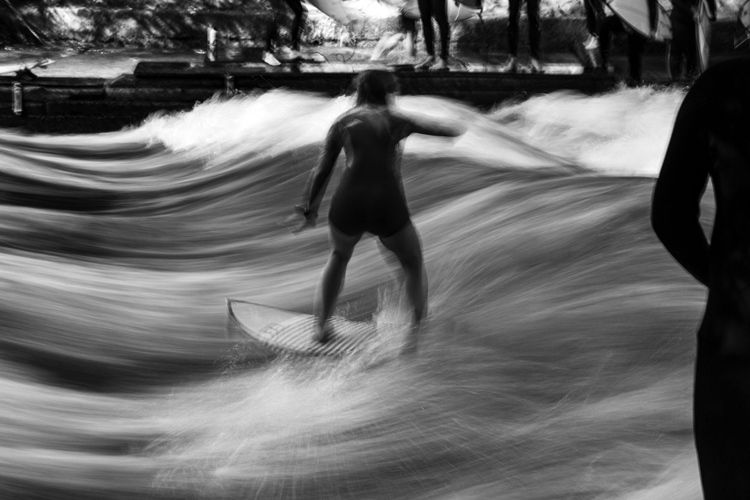
Munich’s legendary Eisbach wave, one of the world’s best-known river surf breaks, has suddenly disappeared.
After decades of continuous surfing, the German standing wave simply failed to return when the city reopened the site following its annual stream cleaning.
The disappearance has left both surfers and city officials surprised and confused.
“The wave isn’t forming,” said Mathias Schmidt from the Surfing Interest Group in Munich.
“We are at a loss. I stood at the edge with my board on Friday evening and couldn’t believe it,” added local surfer Klaus Rudolf.
Normally, the Eisbach – a narrow, fast-moving offshoot of the Isar River – produces an unbroken, open-face wave that draws surfers (and tourists) from around the world.
But for now, that world-famous river wave has gone flat.
What Went Wrong?
No one is sure why the wave collapsed. City engineers say the annual Bachauskehr (stream cleaning) might have changed the conditions in the riverbed.
During this routine maintenance, workers lower the water level, clear out debris and sediment, and check bridges, dams, and banks for damage.
The city’s building department insists that no structural changes were made.
“No modifications were carried out on the Eisbach wave or its side areas,” said a spokesperson.
After inspections earlier this week, officials reported that no damage was found.
Still, surfers suspect the issue could also be linked to how the Isar River feeds water into the Eisbach.
Measurements on Monday showed a normal water depth of around 144 to 145 centimeters, yet the wave didn’t reappear. Usually, 150 centimeters is ideal for surfing.
A Fragile Balance of Water and Physics
“The Eisbach wave is a very fragile construct,” a city engineer explained. Even small changes in water flow or pressure can stop the wave from forming.
City and state representatives met on Tuesday with members of the surfing community to look for solutions.
Munich Mayor Dieter Reiter underlined in an official statement that the goal is to make “the famous surf wave be available soon again as usual.”
One proposal involves temporarily raising the water level to see if that helps the wave rebuild itself. If it works, officials hope the wave will hold once the level drops back to normal.
If not, the team may test how water from the nearby Schwabinger Bach interacts with the Eisbach. The hope is to restore the delicate hydrodynamic balance that makes the famous standing wave possible.
Surfing Paused, But Lights Are New
Ironically, the Eisbach had just received an upgrade before the wave vanished.
New lighting was installed to make the area safer. Surfing is permitted from 5:30 am to 10:00 pm, but remains banned at night.
The lighting project was introduced after a tragic accident in April, when a 33-year-old surfer drowned after her leash became caught on the riverbed.
Darkness made the rescue effort difficult. Now, firefighters can switch on brighter floodlights if needed.
Since that tragic accident, surfers are required to use self-releasing safety leashes. It’s a small but crucial change to prevent boards from trapping riders underwater.
Meanwhile, surfers stand on the bank and up on the bridge waiting for the city’s most famous wave to rise again.
As Schmidt put it simply: “We just hope it comes back soon.”


Leave a Reply